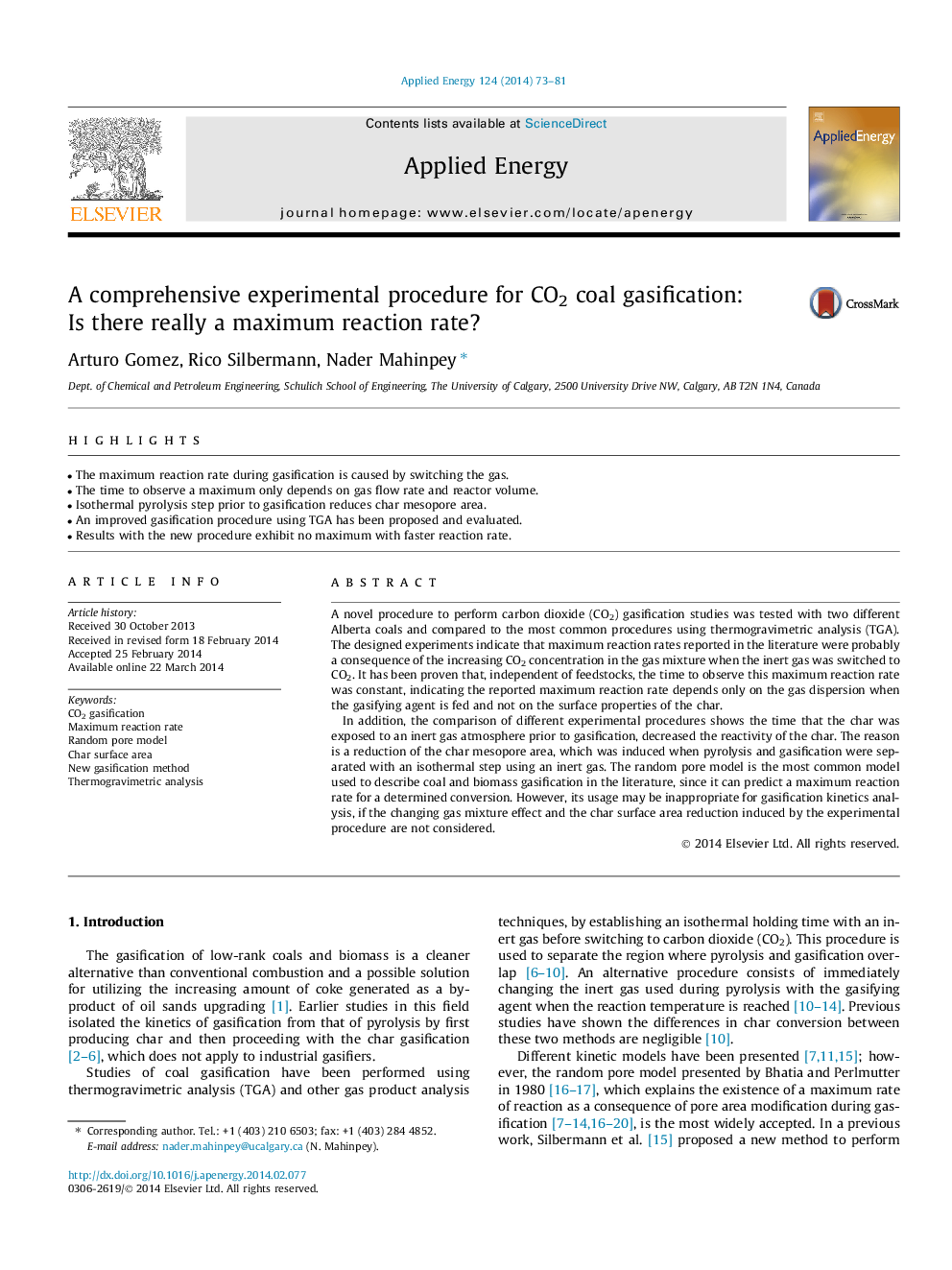| Article ID | Journal | Published Year | Pages | File Type |
|---|---|---|---|---|
| 242815 | Applied Energy | 2014 | 9 Pages |
•The maximum reaction rate during gasification is caused by switching the gas.•The time to observe a maximum only depends on gas flow rate and reactor volume.•Isothermal pyrolysis step prior to gasification reduces char mesopore area.•An improved gasification procedure using TGA has been proposed and evaluated.•Results with the new procedure exhibit no maximum with faster reaction rate.
A novel procedure to perform carbon dioxide (CO2) gasification studies was tested with two different Alberta coals and compared to the most common procedures using thermogravimetric analysis (TGA). The designed experiments indicate that maximum reaction rates reported in the literature were probably a consequence of the increasing CO2 concentration in the gas mixture when the inert gas was switched to CO2. It has been proven that, independent of feedstocks, the time to observe this maximum reaction rate was constant, indicating the reported maximum reaction rate depends only on the gas dispersion when the gasifying agent is fed and not on the surface properties of the char.In addition, the comparison of different experimental procedures shows the time that the char was exposed to an inert gas atmosphere prior to gasification, decreased the reactivity of the char. The reason is a reduction of the char mesopore area, which was induced when pyrolysis and gasification were separated with an isothermal step using an inert gas. The random pore model is the most common model used to describe coal and biomass gasification in the literature, since it can predict a maximum reaction rate for a determined conversion. However, its usage may be inappropriate for gasification kinetics analysis, if the changing gas mixture effect and the char surface area reduction induced by the experimental procedure are not considered.
